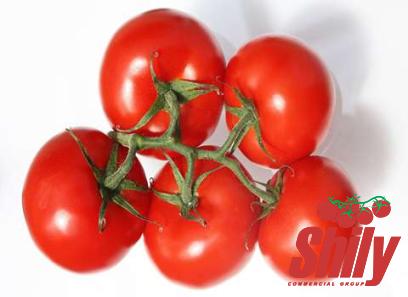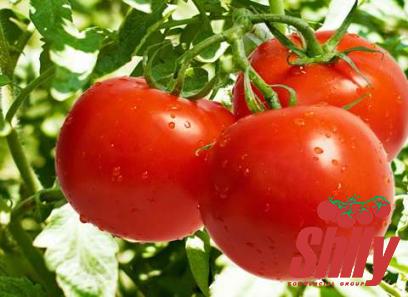Tomato paste is a versatile ingredient that adds depth, flavor, and richness to a wide range of dishes. Making your own tomato paste using a dehydrator not only ensures that you have control over the quality of ingredients but also allows you to customize the flavor according to your preferences. In this comprehensive guide, we will explore the process of making tomato paste in a dehydrator, the benefits of doing so, and tips on how to achieve the best results. #### What is a Dehydrator? A dehydrator is a kitchen appliance that removes moisture from foods such as fruits, vegetables, and herbs to preserve them for longer periods. It works by circulating hot air around the food at a low temperature, effectively drying it out without cooking it.

.
 Dehydrators come in various shapes and sizes, with different features that cater to specific needs. #### Why Make Tomato Paste in a Dehydrator? Making tomato paste in a dehydrator offers several advantages over store-bought options. Firstly, you can control the quality of the ingredients, ensuring that your tomato paste is free from additives, preservatives, and artificial flavors. Secondly, by making your own tomato paste, you can customize the flavor to suit your taste preferences. Additionally, homemade tomato paste is often fresher and more flavorful than store-bought varieties, as it retains the natural sweetness and tanginess of fresh tomatoes. #### The Process of Making Tomato Paste in a Dehydrator To make tomato paste in a dehydrator, you will need a supply of fresh, ripe tomatoes, as well as basic kitchen equipment such as a knife, cutting board, blender, and dehydrator. The process involves several steps: 1. **Preparing the Tomatoes**: Start by washing the tomatoes thoroughly and removing any stems or blemishes. Cut the tomatoes into quarters or halves, depending on their size.
Dehydrators come in various shapes and sizes, with different features that cater to specific needs. #### Why Make Tomato Paste in a Dehydrator? Making tomato paste in a dehydrator offers several advantages over store-bought options. Firstly, you can control the quality of the ingredients, ensuring that your tomato paste is free from additives, preservatives, and artificial flavors. Secondly, by making your own tomato paste, you can customize the flavor to suit your taste preferences. Additionally, homemade tomato paste is often fresher and more flavorful than store-bought varieties, as it retains the natural sweetness and tanginess of fresh tomatoes. #### The Process of Making Tomato Paste in a Dehydrator To make tomato paste in a dehydrator, you will need a supply of fresh, ripe tomatoes, as well as basic kitchen equipment such as a knife, cutting board, blender, and dehydrator. The process involves several steps: 1. **Preparing the Tomatoes**: Start by washing the tomatoes thoroughly and removing any stems or blemishes. Cut the tomatoes into quarters or halves, depending on their size.
..
 2. **Blending the Tomatoes**: Place the chopped tomatoes in a blender or food processor and pulse until they form a smooth puree. You can choose to strain the puree to remove the seeds and skins, or leave them in for added flavor and texture. 3. **Dehydrating the Tomato Puree**: Pour the tomato puree onto dehydrator trays lined with non-stick sheets or parchment paper. Spread the puree evenly to ensure uniform drying. Set the dehydrator to a low temperature, usually around 135°F (57°C), and let the puree dry for several hours, or until it reaches a thick, spreadable consistency. 4. **Checking for Doneness**: To test if the tomato paste is ready, touch it with your finger. It should be tacky and not leave any residue on your finger. Another way to check is to try to roll a small amount into a ball – if it holds its shape, it is ready. 5. **Storing the Tomato Paste**: Once the tomato paste is dried to your liking, let it cool completely before transferring it to airtight containers or jars. Store the tomato paste in a cool, dark place or the refrigerator for longer shelf life.
2. **Blending the Tomatoes**: Place the chopped tomatoes in a blender or food processor and pulse until they form a smooth puree. You can choose to strain the puree to remove the seeds and skins, or leave them in for added flavor and texture. 3. **Dehydrating the Tomato Puree**: Pour the tomato puree onto dehydrator trays lined with non-stick sheets or parchment paper. Spread the puree evenly to ensure uniform drying. Set the dehydrator to a low temperature, usually around 135°F (57°C), and let the puree dry for several hours, or until it reaches a thick, spreadable consistency. 4. **Checking for Doneness**: To test if the tomato paste is ready, touch it with your finger. It should be tacky and not leave any residue on your finger. Another way to check is to try to roll a small amount into a ball – if it holds its shape, it is ready. 5. **Storing the Tomato Paste**: Once the tomato paste is dried to your liking, let it cool completely before transferring it to airtight containers or jars. Store the tomato paste in a cool, dark place or the refrigerator for longer shelf life.
…
 #### Tips for Making the Best Tomato Paste in a Dehydrator – **Choose Ripe Tomatoes**: Use fresh, ripe tomatoes for the best flavor and color in your tomato paste. – **Seasoning**: Enhance the flavor of your tomato paste by adding herbs, spices, garlic, or onions during the blending phase. – **Thickening**: If you prefer a thicker consistency, you can reduce the puree on the stove before dehydrating it. – **Storage**: Store your homemade tomato paste in small portions or ice cube trays for easy use in recipes. – **Experiment**: Don’t be afraid to experiment with different tomato varieties and flavor combinations to create unique tomato paste blends. #### Ways to Use Homemade Tomato Paste Homemade tomato paste can be used in a variety of dishes to add depth and flavor. Here are some ideas for incorporating your homemade tomato paste into your cooking: 1. **Sauces**: Use tomato paste as a base for pasta sauces, stews, soups, and curries. 2. **Marinades**: Create flavorful marinades for meats, tofu, or vegetables using tomato paste as a key ingredient. 3. **Pizza**: Spread tomato paste on pizza dough before adding toppings for a rich, savory flavor. 4. **Dips and Spreads**: Blend tomato paste with yogurt, cream cheese, or hummus for a tasty dip or spread. 5. **Stews and Braises**: Add a spoonful of tomato paste to stews and braises for a concentrated tomato flavor.
#### Tips for Making the Best Tomato Paste in a Dehydrator – **Choose Ripe Tomatoes**: Use fresh, ripe tomatoes for the best flavor and color in your tomato paste. – **Seasoning**: Enhance the flavor of your tomato paste by adding herbs, spices, garlic, or onions during the blending phase. – **Thickening**: If you prefer a thicker consistency, you can reduce the puree on the stove before dehydrating it. – **Storage**: Store your homemade tomato paste in small portions or ice cube trays for easy use in recipes. – **Experiment**: Don’t be afraid to experiment with different tomato varieties and flavor combinations to create unique tomato paste blends. #### Ways to Use Homemade Tomato Paste Homemade tomato paste can be used in a variety of dishes to add depth and flavor. Here are some ideas for incorporating your homemade tomato paste into your cooking: 1. **Sauces**: Use tomato paste as a base for pasta sauces, stews, soups, and curries. 2. **Marinades**: Create flavorful marinades for meats, tofu, or vegetables using tomato paste as a key ingredient. 3. **Pizza**: Spread tomato paste on pizza dough before adding toppings for a rich, savory flavor. 4. **Dips and Spreads**: Blend tomato paste with yogurt, cream cheese, or hummus for a tasty dip or spread. 5. **Stews and Braises**: Add a spoonful of tomato paste to stews and braises for a concentrated tomato flavor.










Your comment submitted.